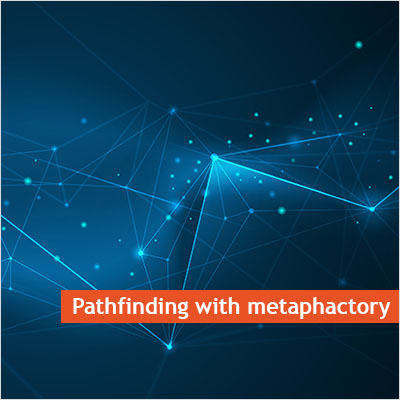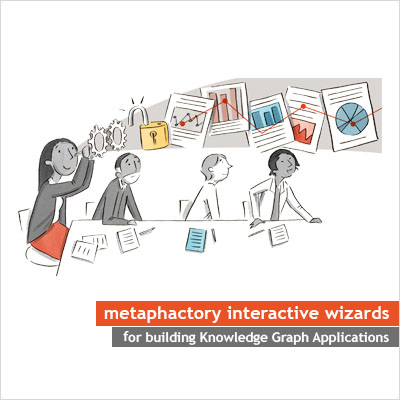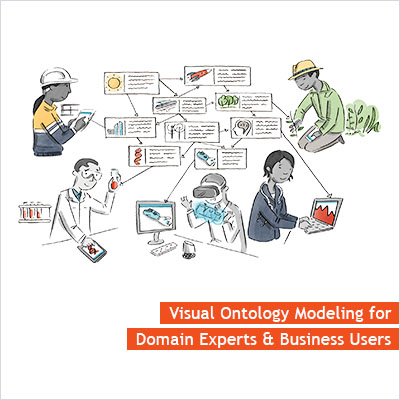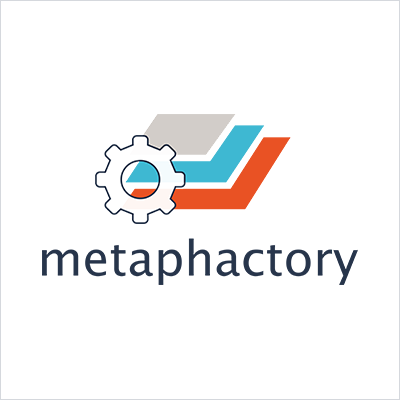Enhanced vocabulary editing and governance in metaphactory
In a previous article, we explored ontology governance in metaphactory. Here, we'll explore new features that enable flexible and transparent governance and editorial workflows for your vocabularies, simplifying collaboration among multiple team members. Keep reading!
A guide to ontology governance in metaphactory
In this blog post, we’ll explore the importance of establishing policies and frameworks that govern the creation and management of ontologies within your organization. We also look at how metaphactory’s ontology management helps to facilitate proper governance.
How to create a knowledge graph application with metaphactory and Amazon Neptune
This article is a follow-up in a series where we show how you can use metaphactory to build an end-user application using its dynamic model-driven components, driven by SPARQL queries. It originally appeared on the Amazon AWS blog and was republished and edited with permission from our partners at Amazon AWS.
Configure Single Sign-On in metaphactory for maximum security & control
 In a previous blog post, we described an approach to forward the identity in the form of the user’s metaphactory access token. Here, we’ll go a step further and show you how the Microsoft Azure On-Behalf Of workflow (OBO) can be employed—to not only forward the metaphactory token but exchange it with an access token for the target application, therefore providing a maximum level of security.
In a previous blog post, we described an approach to forward the identity in the form of the user’s metaphactory access token. Here, we’ll go a step further and show you how the Microsoft Azure On-Behalf Of workflow (OBO) can be employed—to not only forward the metaphactory token but exchange it with an access token for the target application, therefore providing a maximum level of security.
Building massive knowledge graphs using automated ETL pipelines
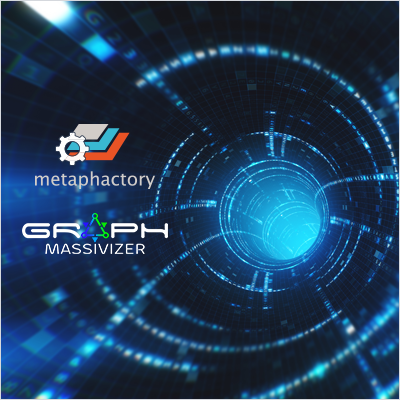 In this blog post, we’ll explore how to build a massive knowledge graph from existing information or external sources in a repeatable and scalable manner. We’ll go through the process step-by-step, and discuss how the Graph-Massivizer project supports the development of multiple large knowledge graphs and the considerations you need to take when creating your own graph. Keep reading!
In this blog post, we’ll explore how to build a massive knowledge graph from existing information or external sources in a repeatable and scalable manner. We’ll go through the process step-by-step, and discuss how the Graph-Massivizer project supports the development of multiple large knowledge graphs and the considerations you need to take when creating your own graph. Keep reading!
Introducing: Next-generation Semantic Search
When it comes to leveraging your enterprise data, having a wealth of quality data is only half the battle. The other half is having the right tools and technology to help you extract valuable insights from it and uncover new opportunities. That’s why we were eager to introduce metaphactory's Next-Generation Semantic Search (Next-gen Search), as part of the metaphactory 5.0 release.
SSO and Identity Management with metaphactory
In a previous blog post we provided a high-level overview on security-related topics for using metaphactory in an enterprise environment. This post will dive deeper into authentication and authorization using single sign-on and also cover how the authentication process can be integrated with databases or external services such as third-party REST endpoints.
Security best practices with metaphactory
For many of our customers, metaphactory is a key component of their data landscape: their knowledge graph ties together various data silos, provides a semantic access layer based on semantic models, and becomes one of the key systems to support decisions and processes from research to sales.
Keeping all involved systems up and running is a big task that requires many different skills. Besides the operational perspective of working with infrastructure, development, and deployment processes, security plays a growing part in this story.
Data authoring with metaphactory's semantic forms
Forms are a key instrument for collecting and authoring data, while knowledge graphs are the de facto standard for modeling and representing human knowledge. metaphactory delivers a highly configurable semantic form component that empowers you to build user-friendly form interfaces based on the semantic model (ontology1) in the underlying knowledge graph. End users can use these form interfaces to edit existing data, create new data, and interlink resources in the knowledge graph.
In this blog post, we will provide an introduction to semantic forms in metaphactory and discuss how they support data authoring use cases on top of knowledge graphs. To demonstrate how metaphactory's semantic forms work in practice, we will look at a practical example and will augment the Nobel Prize Dataset with information about scholarly articles. The Nobel Prize Dataset is a public dataset available as a Semantic Knowledge Graph, i.e., it is published in RDF and described by an OWL ontology. We extended the ontology with SHACL shapes to also model relevant constraints which can be utilized within the forms. The ontology and dataset include information about all Laureates (Persons, Organizations) who have received a Nobel Prize Laureate Award in a certain Category, or a share thereof, ever since the inception of the Nobel Prize2. Our aim will be to extend this information to include details about scholarly articles published by these laureates.
Vocabulary management for domain experts and business users with metaphactory
This blog post introduces metaphactory's vocabulary management features, which extend the platform's knowledge modeling capabilities and support knowledge graph experts, domain experts and business users in creating and editing SKOS vocabularies to capture business-relevant terms. We'll start out by defining what vocabularies are and looking at the use cases they can serve. Then, we'll look at specific vocabulary management features supported in metaphactory. Finally, we'll look at a specific use case and integrate an existing thesaurus into metaphactory and use the platform's semantic structured search component to explore terms and to connect data through relations between entities.
Data in context with metaphactory's flexible data cataloging capabilities
Timely access to consumable, contextual, and actionable knowledge is crucial for any step in the decision-making process and the key enabler of decision intelligence. However, decision makers and decision support systems are still faced with the everlasting challenge that data relevant to and required for addressing their specific information needs is stored in distributed and database- or application-specific silos.
Federation in metaphactory
With metaphactory, we serve customers of various sizes and across multiple industries, but no matter whether we're talking about a clinical trial scoping or a bill of materials use case, customers are looking for solutions to address hybrid information needs. That means that end users usually have questions or information needs that are not limited to one single data source or just RDF graph data, but involve simultaneously dealing with a multitude of data sources, a multitude of data modalities and a multitude of data processing techniques.
Investigative knowledge graph exploration & targeted problem solving with metaphactory’s pathfinding interface
Finding paths in a graph is a well defined space in mathematics and computer science. The Seven Bridges of Königsberg problem from 1736 - which asked to devise a roundtrip through the city of Königsberg in Prussia while crossing each bridge in the city only once - is one of the most famous real world problems and resulted in the foundations of today's graph theory.
While the term pathfinding might often be associated with finding the shortest path (for example, in a geographical context or in computer networks), the seven bridges problem is a good example showing that the shortest path is not necessarily the optimal or desired path for a given problem or information need.
Building a Knowledge Graph Application is easier than ever with metaphactory’s intuitive wizards
Many enterprises have identified Knowledge Graphs as the foundation for unlocking the value of their data assets, easing knowledge discovery and surfacing previously unknown insights and relations in their data. But while the benefits of Knowledge Graphs have become clear, the road to implementation has often been long and complex. Success in making these benefits tangible to the actual business users who interact with and rely on this data on a daily basis has required the involvement of seasoned knowledge graph experts.
In this blog post, we provide an introduction into metaphactory's intuitive and interactive wizards which support application engineers in quickly and visually setting up and configuring search and authoring interfaces that cater to specific end-user information needs. The wizards (introduced recently with the metaphactory 4.2 release ) are one of the pillars of metaphactory's low-code approach for building knowledge graph applications. They allow application engineers to focus entirely on translating end-user information needs into intuitive, model-driven interfaces without getting caught up in the technical details of the semantic technologies stack.
Searching with metaphactory - An Overview
This blog post refers to metaphactory components that have been deprecated. Please refer to our blog post on next-gen semantic search for up-to-date-information.
Extracting meaningful and actionable insights from data is only possible if data is easily and intuitively accessible to and searchable for users. But as data accumulates, finding the right bit of information becomes challenging.
Knowledge Graphs have proven extremely powerful in surfacing previously unknown insights and relations in the data. They enable unprecedented query expressiveness and allow to make all instance data and its related metadata searchable, accessible and shareable.
metaphactory is an excellent example of leveraging Knowledge Graphs to bring together information distributed across siloed sources and departments, ultimately empowering end users to unlock the value of data, especially when it comes to search.
This blog post provides an overview of the metaphactory search components. To make the experience as concrete as possible, we provide examples using the most prominent publicly available knowledge graph: Wikidata. For that purpose, we are hosting an instance of our metaphactory platform on top of Wikidata for you to experience. The specific implementations described in this post are based on examples from the Life Sciences domain, but can be adjusted to match information needs across other usage scenarios or verticals.
Visual Ontology Modeling for Domain Experts and Business Users with metaphactory
In my previous blog post on building Knowledge Graph-driven, FAIR Data platforms I discussed the importance of data and data-driven decisions, processes and tools in accelerating digital transformation. Knowledge Graphs have revolutionized the way data can be accessed and used, and have helped enterprises overcome the challenges posed by distributed silos where information is available to limited audiences, in heterogeneous formats, and represented according to different models. They have led to great advances in terms of data integration, interoperability and accessibility, and have allowed companies to tap into the full potential of their data assets and transform data into valuable and actionable knowledge.
Hello, metaphactory!
Our mission at metaphacts has always been to ease the onboarding into the world of enterprise knowledge graphs. With our product metaphactory we provide an end-to-end platform to support that mission and enable our clients in unlocking the value of their data assets. Since we first published metaphactory in 2015, with every new release we have introduced new features and capabilities to enable rich end-user experiences in interacting with knowledge graphs.
Through our blog, we want to continuously share some of the recent developments, examples, best practices and make the power of knowledge graph technologies more accessible for you.
Just today we released metaphactory 3.6, so this is a great opportunity to start this blog with showing you some cool new additions to our product. With our most recent release, we have introduced a series of new components and enhancements that help provide a more intuitive user experience and user interaction. These new components cater to user needs across all platform target user groups: end users, developers focused on building end-user oriented applications, as well as knowledge graph experts.











